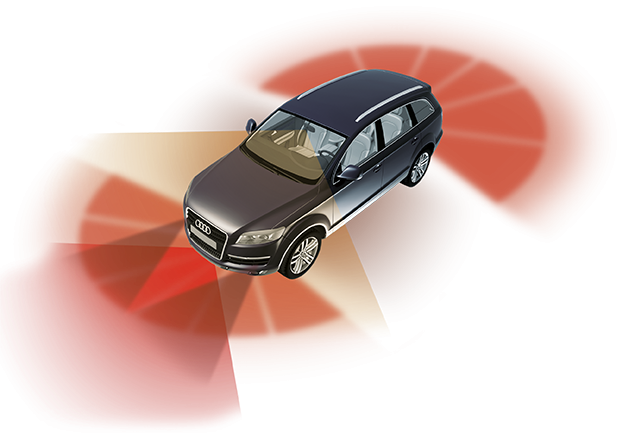Car safety sensors
BACKGROUND
The aim of analysing the sensors of a vehicle is to optimise the signals received by the vehicles computers that arrive from the different sensors that are installed such as accelerometers or pressure sensors. This optimisation must be in signal magnitude as well as in the instant in time, in a manner that the passive safety systems, such as an airbag, are activated only as desired and not at the wrong time or for an action that does not justify its use. Part of SOLUTEs extensive experience includes the CAE development of a car, the execution of these specific analyses, with tasks such as modelling, analysis and correlation through testing.
Car safety requirements, from the administration as well as consumers, are increasingly becoming more extensive and stricter; therefore, in its development, vehicle manufacturers (OEMs) as well as suppliers must include extensive studies for configuring the active and passive safety systems.
Specifically, passive safety systems receive data from a large number of sensors installed in the car, which compile the necessary information for decision making in passive safety systems: airbag, safety belt pre-tensioners or whiplash mitigation systems, among others.
RESULTS
The simulation model study in the vehicle design phase allows understanding the overall behaviour during a collision and how the signals are transmitted to the computer that will be making the decisions of whether or not to activate some of the passive safety systems. By identifying what components or parts affect performance, it is possible, in concordance with other disciplines, to make design change decisions quickly and effectively.
EXPERIENCE
Since 2016 SOLUTE has been collaborating with companies in the car sector in the modelling, study and correlation with sensor signals testing in multiple collision scenarios, in an interdisciplinary manner with the other teams involved in developing these systems. In these projects it is common to work with the methodology and requirements set by customers. An extensive experience in CAE development of car bodies applied to multiple disciplines, provides SOLUTE with the capability to tackle the complexity in the tasks executed with the full simulation models that are required of these studies, models with a high degree of detail, including all the sensors of a vehicle for reading and measuring the signals.
The calculations are generally explicit, where the car is crashed in hundreds of different possible scenarios in order to capture and study the widest range of signals generated during the collisions' time span.
METHODOLOGY
The study of car sensor signals is carried out using specialised CAE (Computational Advanced Evaluation) software based on the finite Elements Method (FEM). These programmes with a high representation capacity are usually commercial off the shelf (ANSA, NASTRAN, PAMCRASH, META or ABAQUS).
The calculations are generally explicit, where the car is crashed in hundreds of different possible scenarios in order to capture and study the widest range of signals generated during the collisions' time span. By observing, reviewing and analysing these is how we ensure that the signal received by the computers is not erroneous or that it arrives in time.
The results obtained in the different simulation models must be correlated with those measured during the laboratory tests. In cases where the model differs in excess from reality, we must iteratively tackle a series of changes in the configuration of the parameters of the CAE model that will end up improving them, attaining a high representativeness that allows validating the model for developing the vehicle.
VR
Digital Twins
Virtual replicas of a specific model that reflect their asset with a high degree of accuracy and incorporate data in real time, collected through sensors, to evaluate the performance and implement improvements that can be transferred to the original physical asset they represent.
Solar
Design of solar installation for self-consumption
Estimation of energy production in a self-consumption photovoltaic plant through a correct definition and sizing of the installed equipment to reduce uncertainty and maximise savings.
